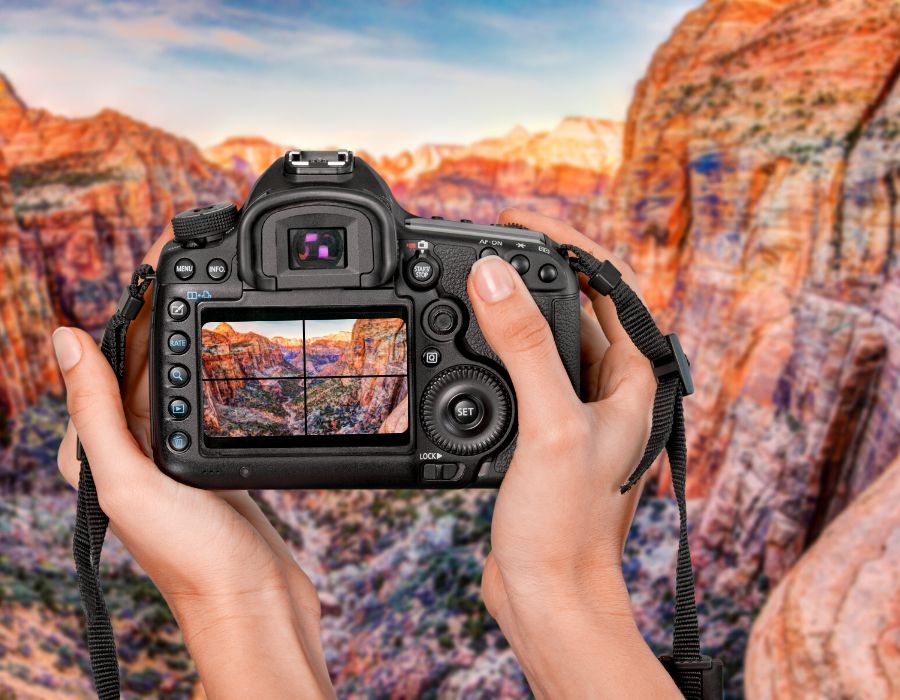Since its discovery, people visiting Zion National Park have been in awe of its beauty and grandeur. Zion National Park had its beginning as a National Monument, with a name that was quite difficult to pronounce. The Mukuntuweap National Monument was upgraded to National Park status and given a much needed name change by November 1919. Since that time Zion National Park has grown to become one of the most popular National Parks in the United States. Besides the beauty of Zion, the park also offers incredible hiking, mountain biking and horseback riding trails.
Among the more popular trails is the one to Emerald Pools. As the name suggests, this trail takes hikers past several small pools of water before descending a rock staircase that passes beneath a waterfall. This is a moderate hike and is a wonderful way to cool off on a hot summer day in southwestern Utah. There are many more hikes to be found in Zion National Park including, Angles Landing, Watchmen, Weeping Rock and of course the world famous Narrows. The Narrows trail takes adventurers up the Virgin River through a series of twists and turns. As hikers move up the riverbed the canyon walls get closer and closer eventually leading to a point were you either turn back or climb out. Due to the flash flood potential on this trail, hikers should check the weather forecast prior to departure.
Along with all of the natural wonders found in Zion National Park, there are also man-made wonders. The most amazing of which is the Zion-Mt. Carmel tunnel located at the east entrance to the park. The tunnel was built in the 1920s and offers travelers quick access to Mt. Carmel and the marvels beyond Zion; such as Bryce Canyon and the Grand Staircase National Monument. As the road tunnels through rock and stone, travelers are offered quick glimpses of the scenery outside though amazing windows carved into the mountain side. When planning your day be sure to leave extra time to get through the tunnel. Due to vehicles being larger now than in the past, rangers will only allow vehicles from one direction or the other into the tunnel at a time. For safety reasons, the tunnel is closed to pedestrians and bicyclists.
Aside from the main canyon, at Zion National Park there is also a smaller less traveled area. The Kolob Canyon entrance to Zion is found on 1-15 between St. George and Cedar City, a few miles north of the main exit to Zion. This section of Zion National Park is not as grand as the main area, but the red and brown sandstone of Kolob is every bit as beautiful. There are several day-trails through Kolob as well as back country trails that require a permit and backpacking gear.
Zion National Park extends over 30 miles from east to west and and covers 229 square miles. These canyons were named by early Mormon settlers (LDS) and some of the formations within the park have names from the Christian Bible. Zion National Park is a composite of sandstone that has been stained by the oxidizing of iron in the rock, thus providing the brilliant red hues within the park. These canyons are inhabited by approximately 75 species of mammals, 32 reptiles and amphibians, 271 birds and 8 fish.
Within Zion National Park is a remarkable cliff-and-canyon landscape full of the unexpected. The world’s largest natural rock arch – Kolob Arch – has a span that measures 310 feet. Wildlife such as wild turkeys, mule deer, golden eagles, big horn sheep and mountain lions live within the Park. The sandstone, that comprises most of the rock in Zion National Park, was created by the compressing of ancient sand dunes. This was able to occur as compounds such as calcium carbonate cemented the sand. Subsequently streams running across the Colorado Plateau forced their way into the seams and cracks of the terrain and began the process of carving out the canyons that exist today. Millions of tons of rock and debris have been taken all the way to the pacific ocean from the sandstone mountains of Zion National Park.
Park Entrance Fees:
• $10.00 – Single Person entry by foot, bicycle, or motorcycle for 7 days.
• $20.00 – Single Vehicle entry Valid at Zion National Park for 7 days.
• $40.00 – Zion National Park Pass – valid at Zion National Park for 1 year from month of purchase.
• $10.00 – Golden Age Passport – Lifetime pass is available to U.S. residents 62 years old and over. This is valid at all Federal fee areas.
• $50.00 – Golden Eagle Passport is valid at all Federal entrance fee parks or areas for one year from month of purchase.







